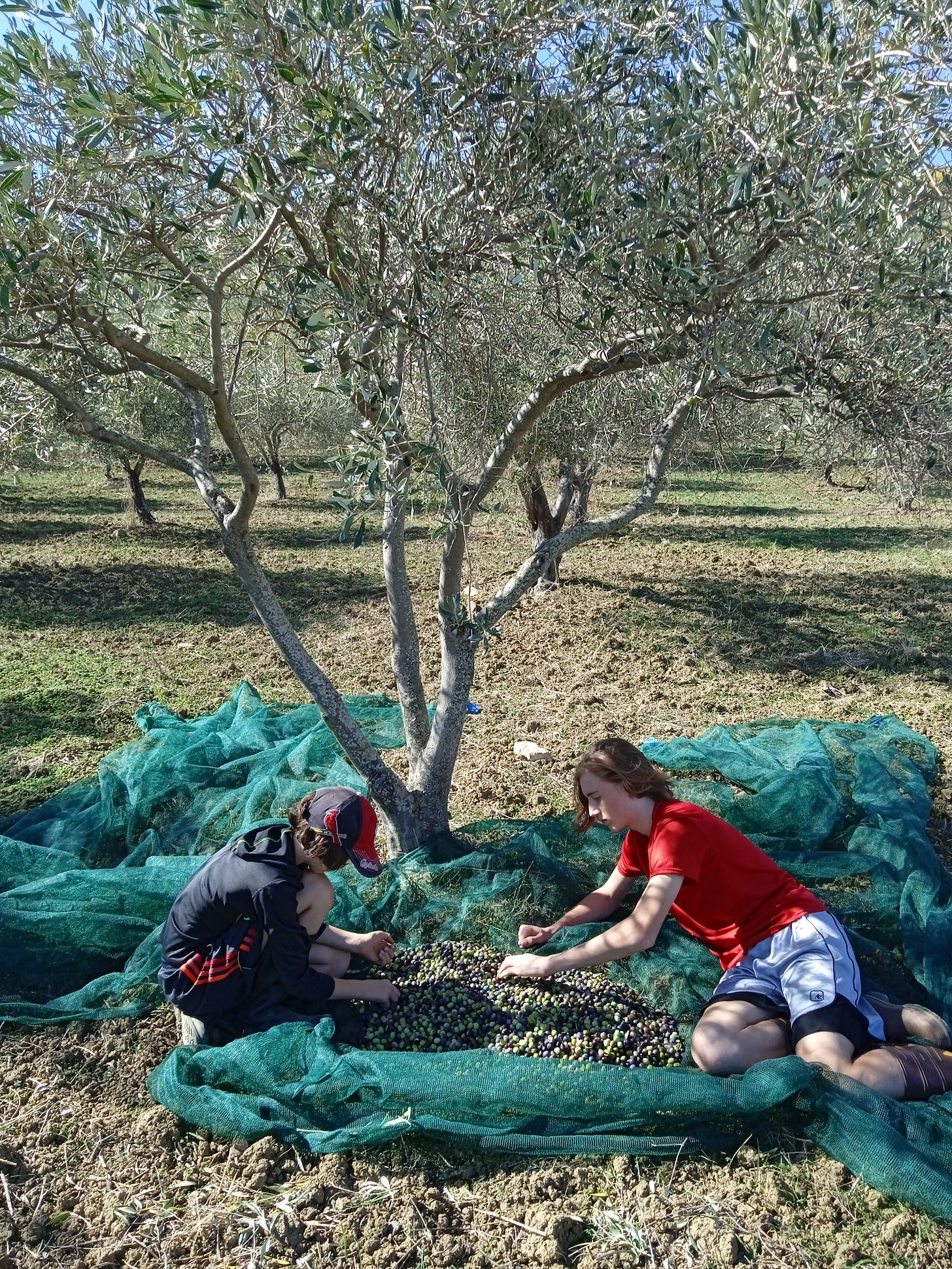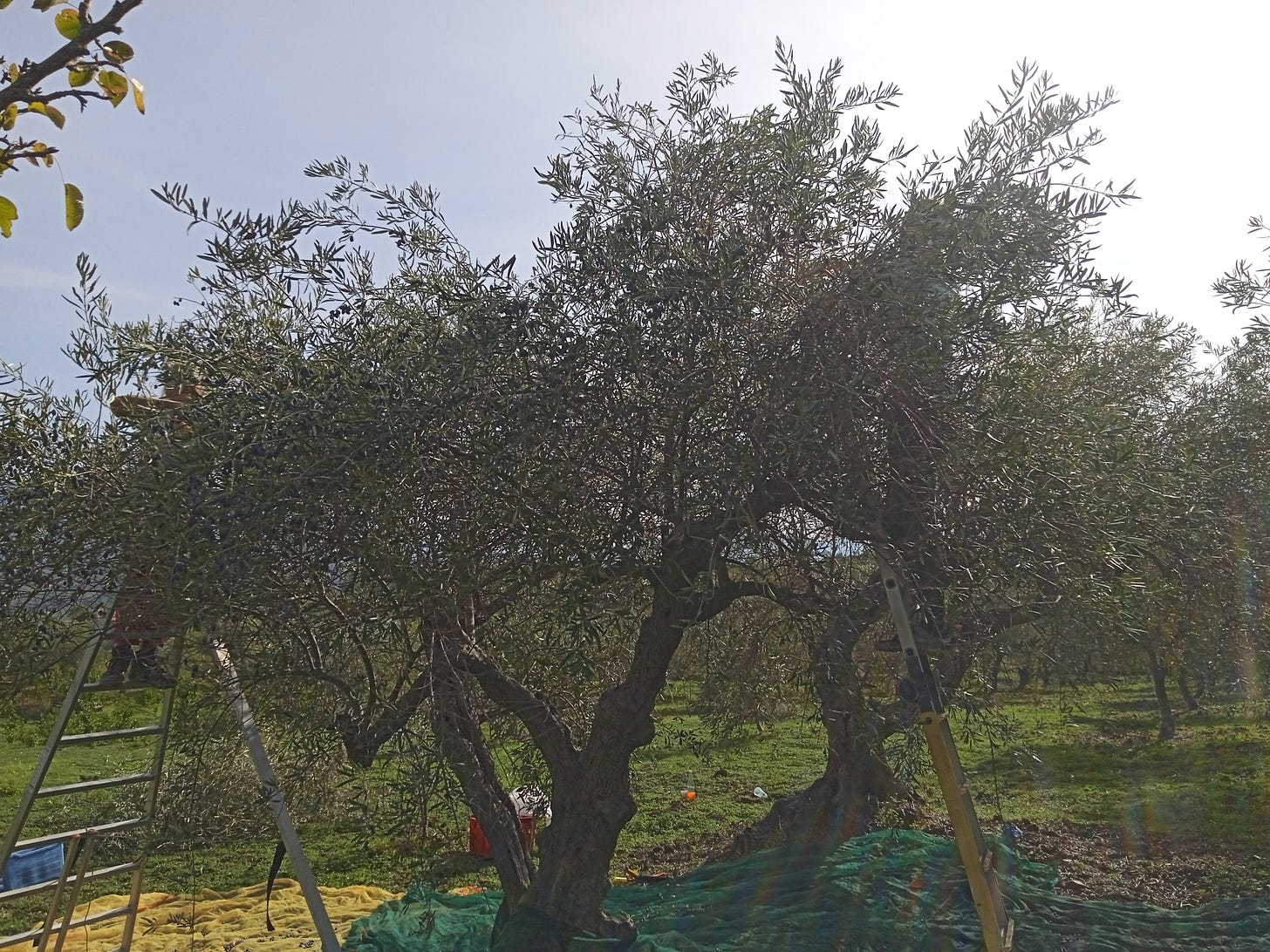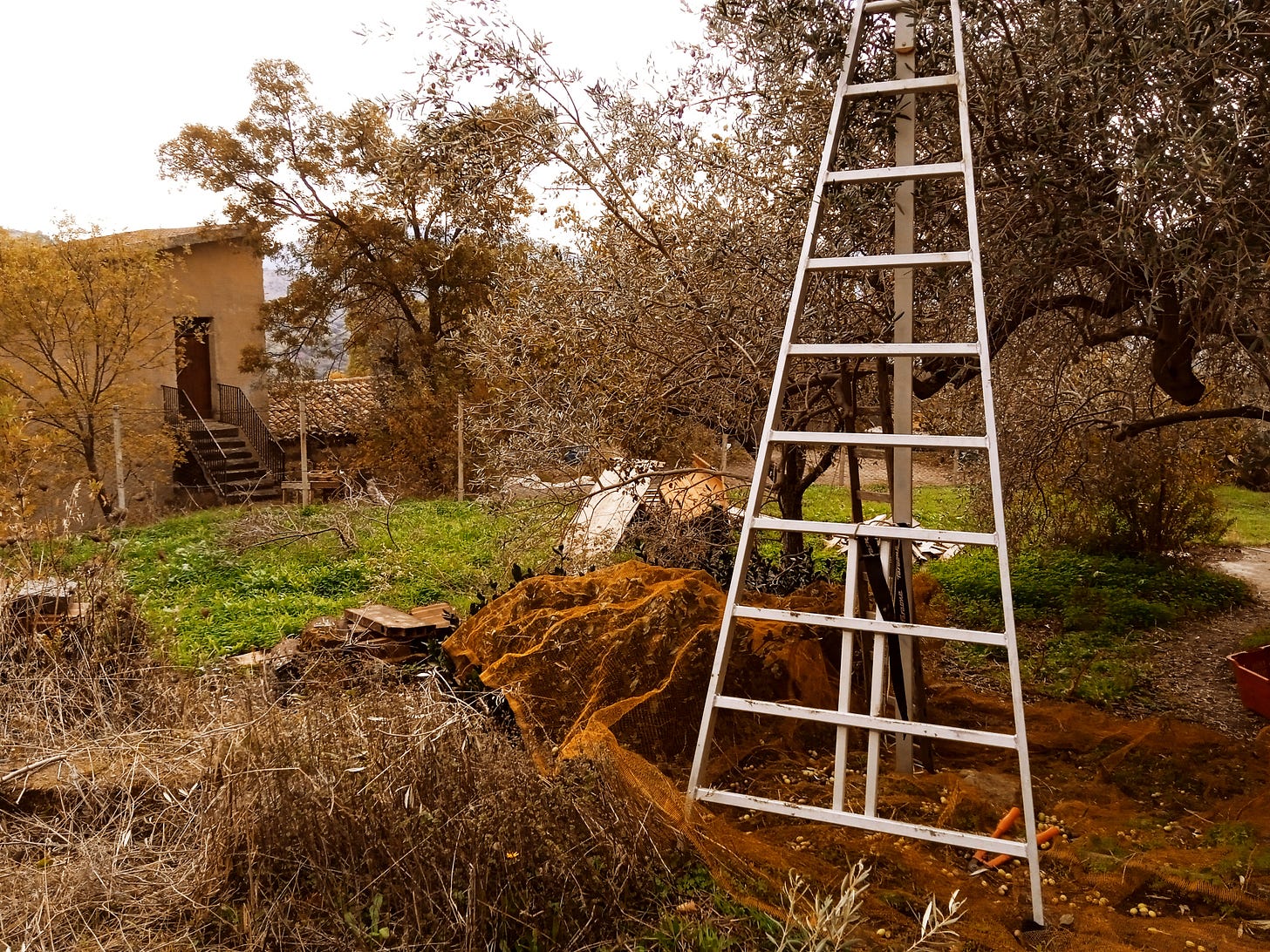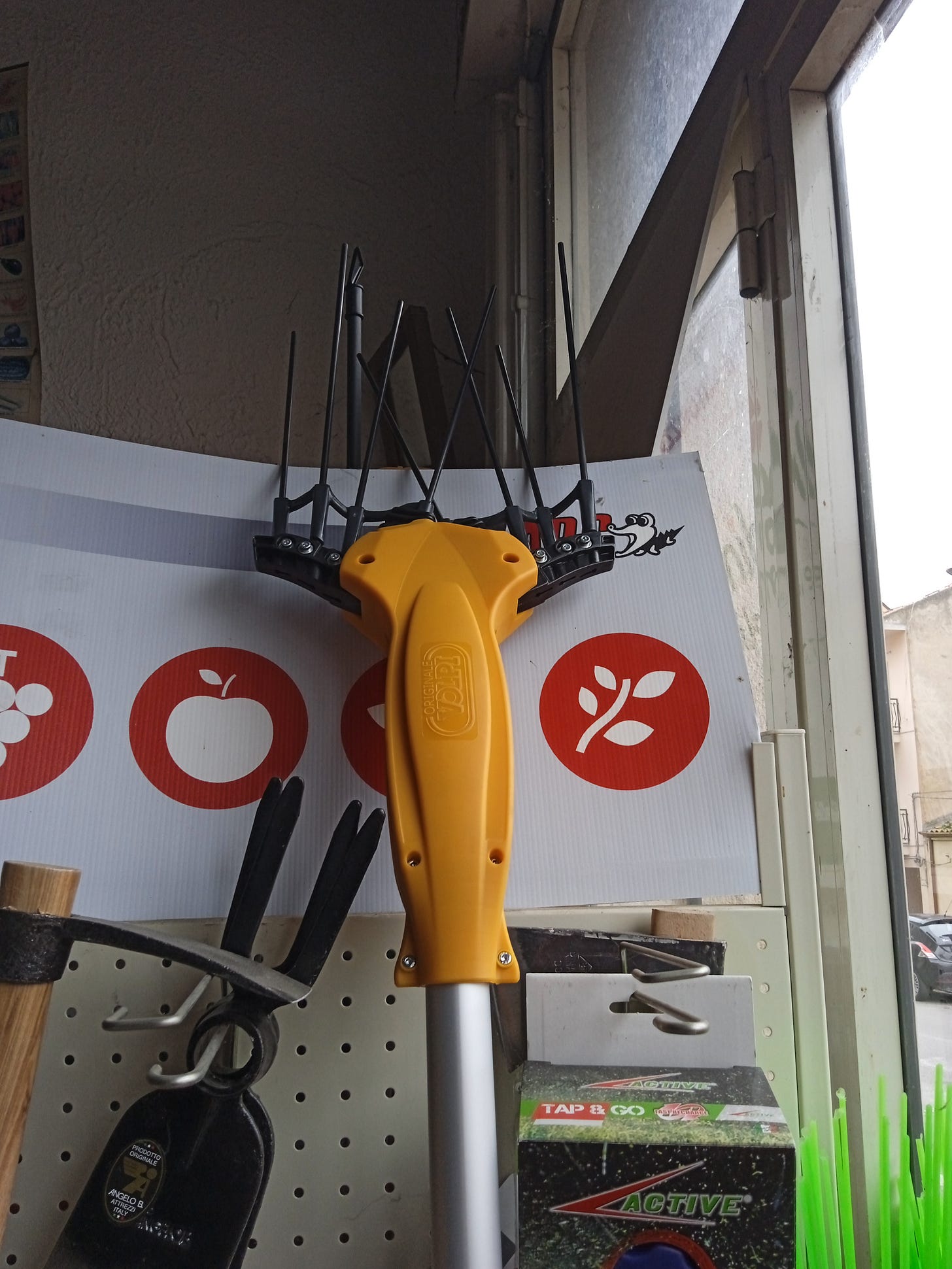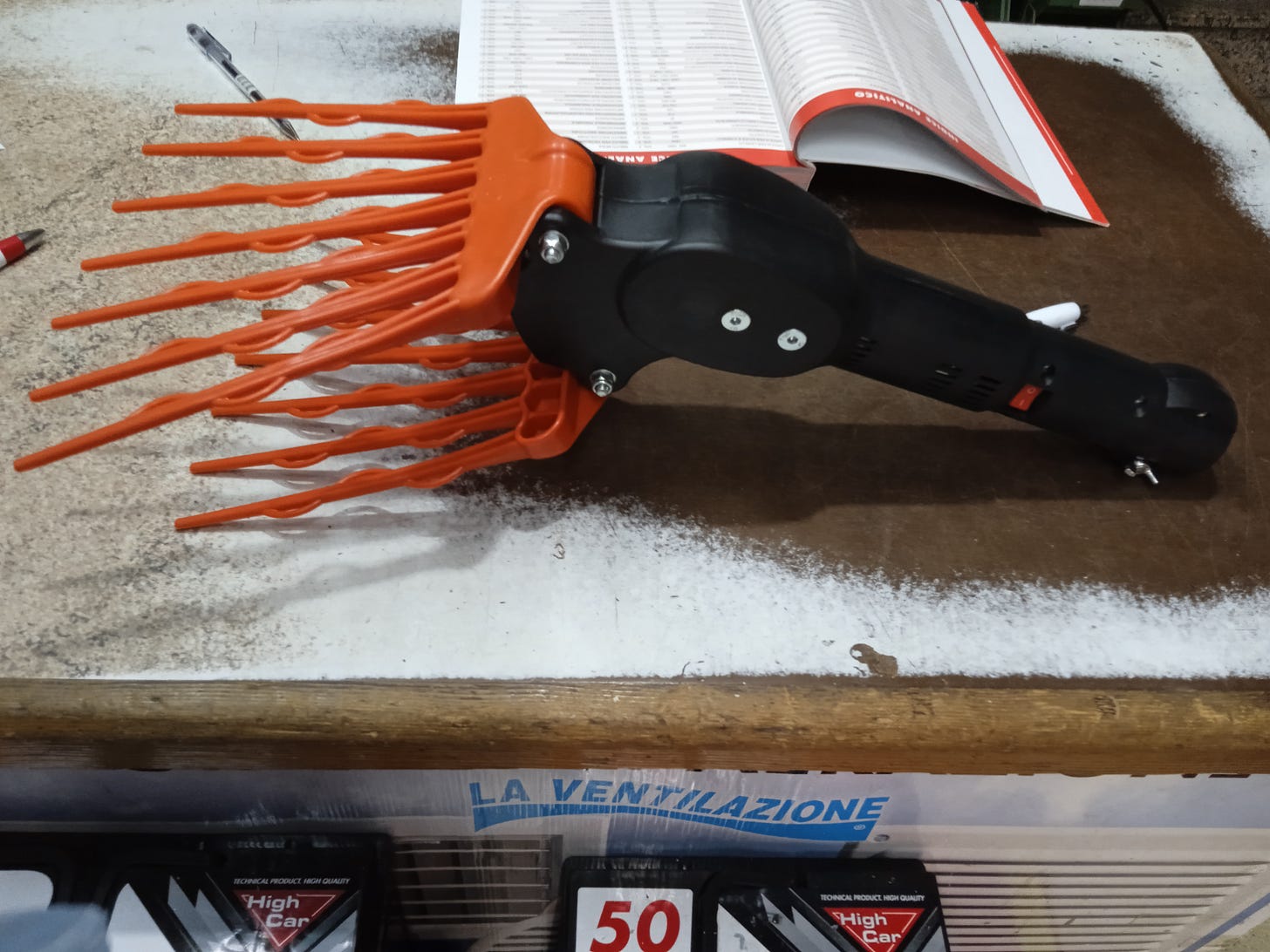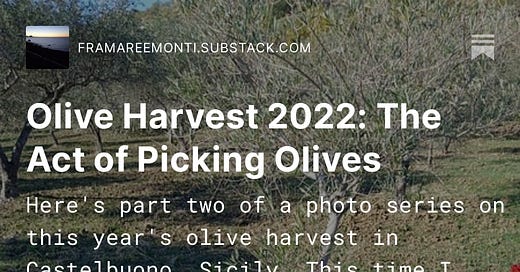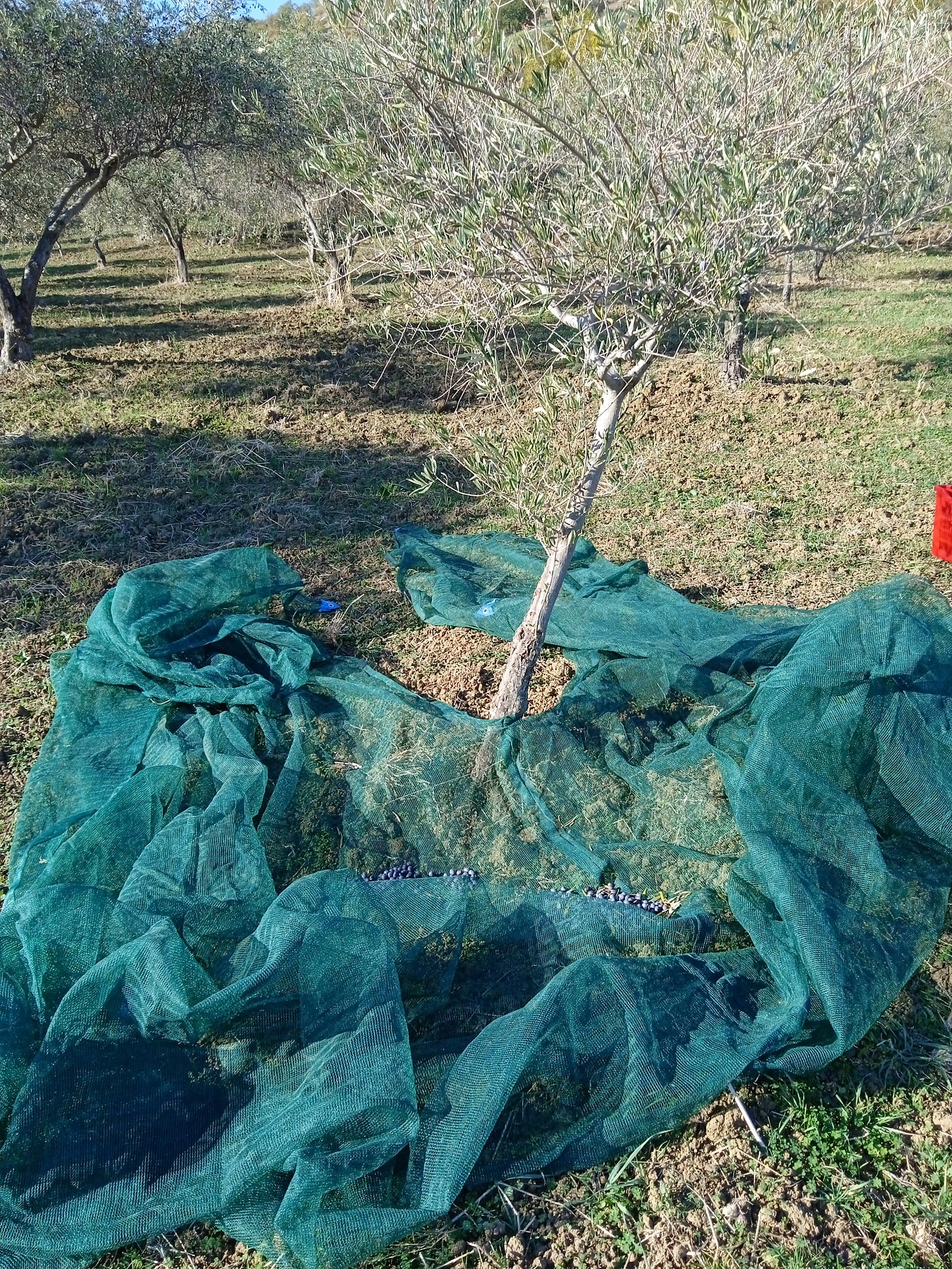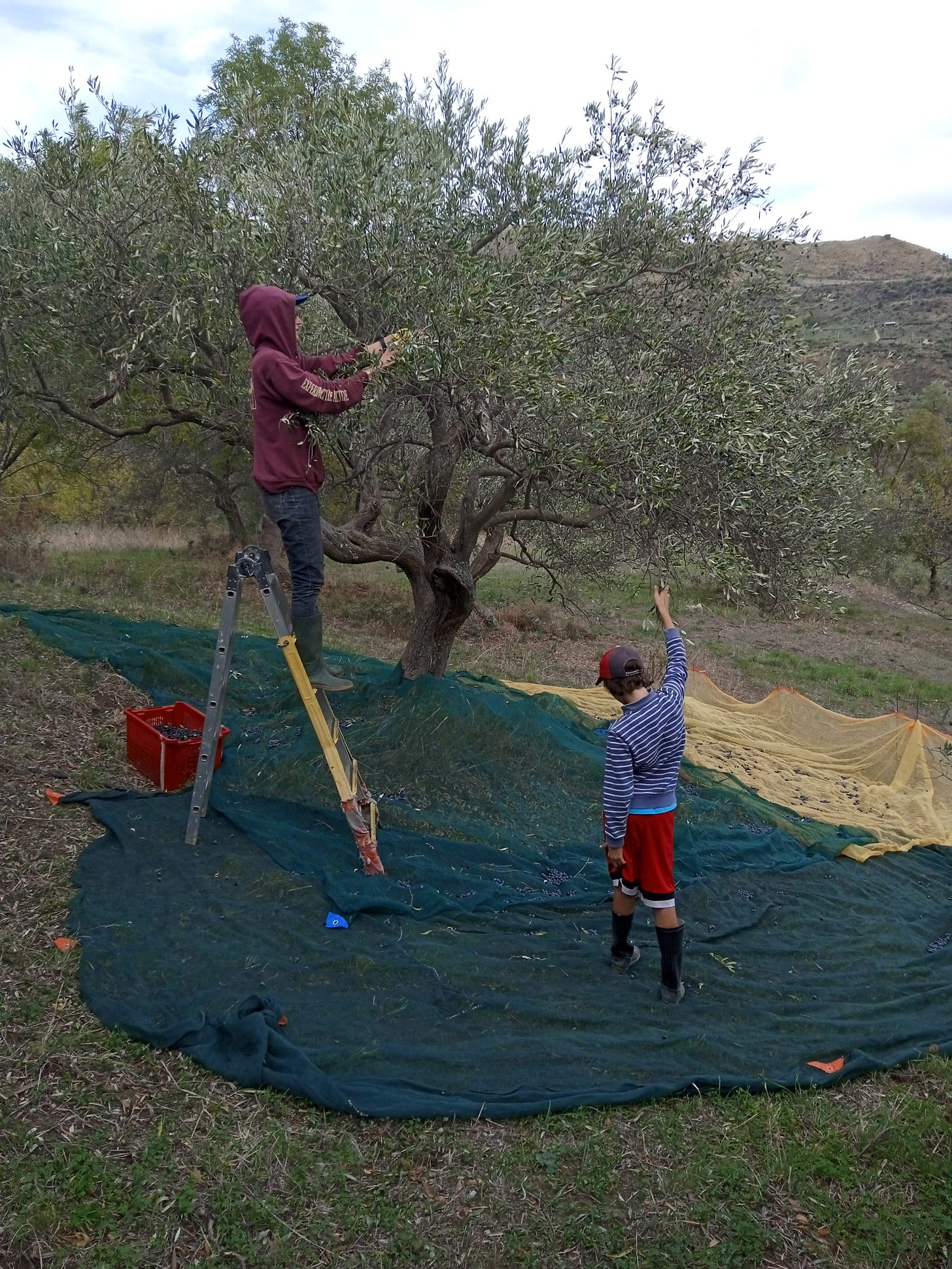Olive Harvest 2022: The Act of Picking Olives
Here's part two of a photo series on this year's olive harvest in Castelbuono, Sicily. This time I take a look at how olives are harvested
This year’s harvest in Castelbuono, Sicily, is one of the best in recent years and many locals are comparing it to the bountiful raccolta (Italian for harvest) of 2015. Olive trees tend to produce fruit every two years, which means harvests can often be of low yield. Other factors and conditions can make for poor harvests too: Drought, the activity of olive fruit flies, windy springs that cause olive flowers to fall, too much rain. But the olive pickers of Castelbuono were fortunate this year to be rewarded with a good harvest, though not a record-breaking one.
There are lots of ways to pick olives but the most common and effective way is to lay large synthetic nets — usually green in color — around trees in order to catch olives that can be picked by hand, raked off with plastic claws, made to fall by striking sticks and knocked down by mechanical devices. Olive nets are typically made of light-weight flexible and durable material made from polyethylene monofilament. Some people in Castelbuono also collect olives by placing an umbrella upside down in a tree and pulling the olive fruit into the umbrella.
Once a tree has been picked, the nets are then pulled up in such a way as to heap the fruit all together. Harvesters then remove as many leaves, twigs, bits of mud and grass as they can before dumping the olives into plastic olive crates (cassette) or olive bags. The crates are better because they allow the freshly-picked olives to breathe. It’s always best to get harvested olives to the olive mill as soon as possible in order to get the best olive oil possible and obtain the highest levels of polyphenols, those natural chemical molecules that are so prized for their health effects due to their antioxidant and other properties.
Here, then, are a few photographs about picking olives.
